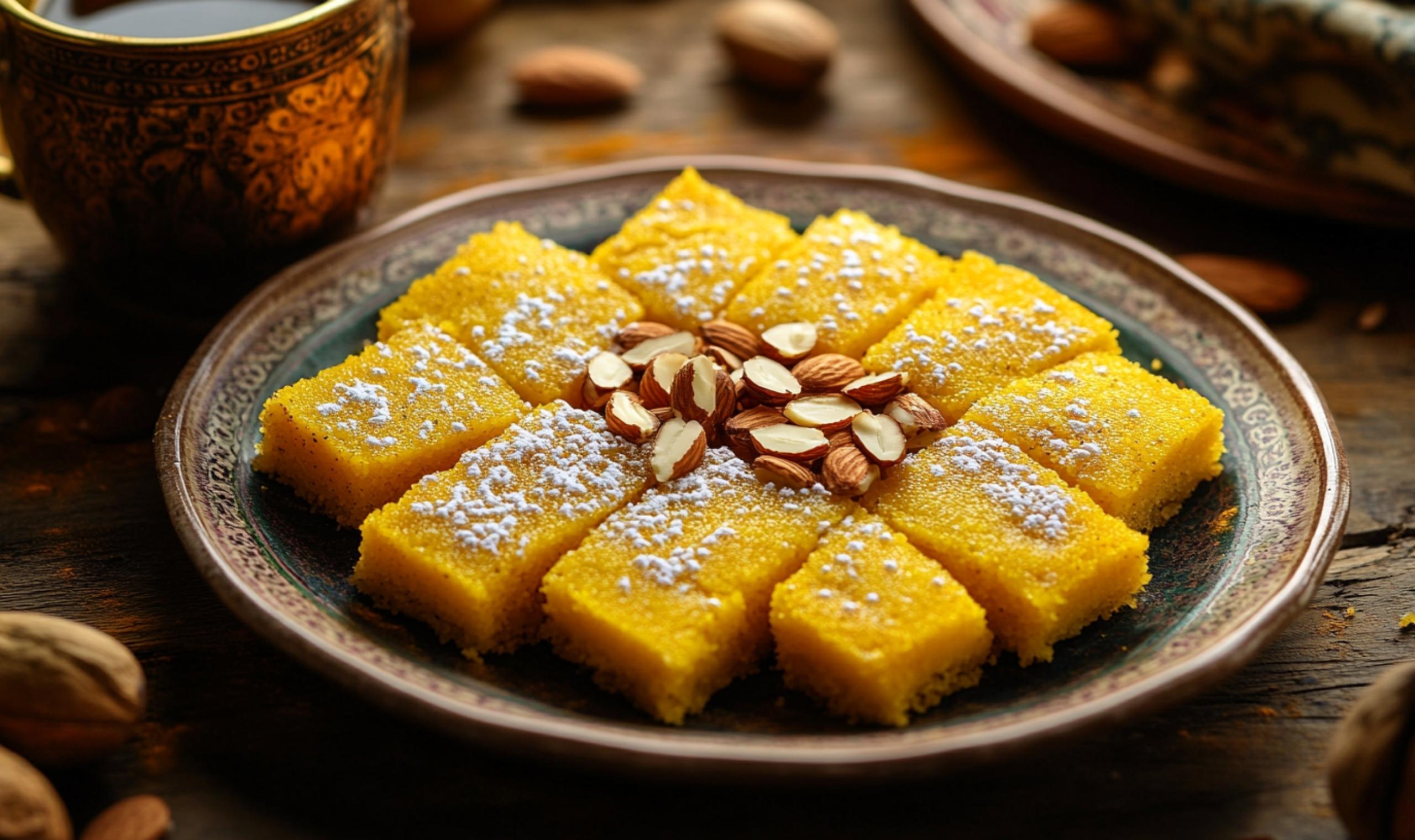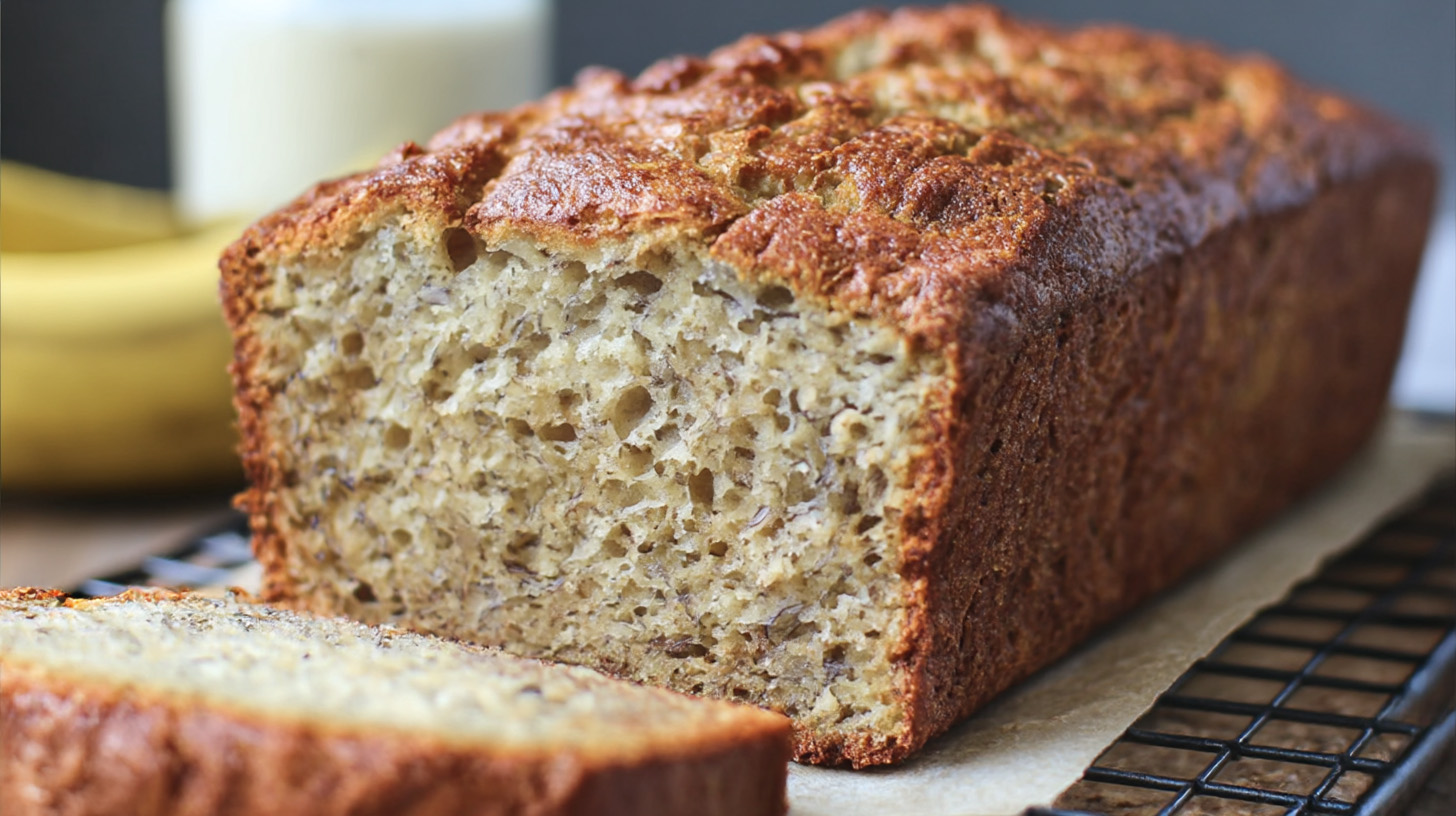Sfouf: Lebanon’s Golden Turmeric Cake
Sfouf is the kind of dessert that manages to be both humble and magnificent. With its vibrant golden hue, thanks to a generous pinch of turmeric, this Lebanese semolina cake is a feast for the eyes and the taste buds. Soft, subtly sweet, and faintly nutty, sfouf is the ultimate crowd-pleaser—perfect for a family gathering, a casual coffee break, or just because you fancy a treat.
A Cake with Roots as Rich as Its Colour
Sfouf’s origins lie in the heart of Lebanon, where simple, wholesome ingredients have always been the cornerstone of traditional cooking. The name “sfouf” translates to “rows,” referring to the way the cake is often sliced into neat, tidy rows before serving. It’s a dessert steeped in history, often tied to celebrations and gatherings where it symbolises togetherness and abundance.
What makes sfouf unique is its use of turmeric, an ingredient more commonly associated with savoury dishes. In this sweet context, turmeric lends its earthy warmth and vibrant colour without overpowering the other flavours. It’s a subtle nod to the spice trade routes that once passed through the Middle East, bringing exotic ingredients into everyday kitchens.
Regional Twists on the Classic
While the core recipe for sfouf remains consistent, regional variations add a bit of flair. In some parts of Lebanon, you might find sfouf topped with pine nuts or sesame seeds, adding a delightful crunch. Others incorporate a touch of rose or orange blossom water for a floral lift.
Modern takes on sfouf sometimes substitute almond or oat milk for the traditional cow’s milk, making it a favourite among vegans and those avoiding dairy. Some bakers even play with the sugar content, opting for honey or date syrup to sweeten the cake naturally. Despite these adaptations, the essence of sfouf—its simplicity and warmth—remains intact.
Drinks That Pair Perfectly
Sfouf pairs beautifully with a strong, cardamom-spiced Arabic coffee, creating a harmonious balance of flavours. If coffee isn’t your thing, a cup of black tea, particularly one flavoured with mint or cinnamon, is a fantastic companion. For something lighter, try a chilled glass of rosewater lemonade, which highlights the cake’s subtle floral notes.
If you’re serving sfouf at a celebration, consider pairing it with a glass of sparkling wine. The bubbles cut through the richness of the cake while complementing its delicate sweetness. And for an indulgent non-alcoholic option, a warm cup of golden turmeric milk mirrors the cake’s colour and flavour, creating a cosy, cohesive experience.
Foods to Serve Alongside
While sfouf is lovely on its own, it plays well with others. Serve it as part of a dessert spread alongside baklava, maamoul, or kanafeh for a Middle Eastern feast of sweets. For a contrasting flavour profile, pair it with fresh fruits like pomegranates, figs, or citrus slices, which add a refreshing burst of acidity.
Sfouf also makes a delightful addition to a brunch table. Pair it with yoghurt drizzled with honey and a sprinkle of pistachios for a balanced, slightly decadent morning treat. And if you’re feeling adventurous, try serving sfouf with a dollop of clotted cream—it’s an unexpected but heavenly combination.
Why Turmeric Is the Star
Turmeric isn’t just there to make sfouf look good (though it certainly does that). This golden spice adds an earthy, slightly peppery flavour that sets the cake apart from other semolina desserts. It’s also packed with health benefits, from its anti-inflammatory properties to its antioxidant effects. So when you indulge in a slice of sfouf, you can almost convince yourself it’s virtuous.
The spice is balanced by a blend of semolina and flour, which gives the cake its signature crumbly texture. Combined with the nuttiness of tahini or butter (depending on the recipe), the result is a dessert that’s simple yet deeply satisfying.
The Perfect Bake Every Time
The key to a perfect sfouf is getting the texture just right. The batter should be thick but pourable, and the cake should bake up tender without being too dense. Greasing the pan with tahini instead of butter not only adds flavour but also ensures the cake doesn’t stick, making it easy to slice into those iconic rows.
One of the best things about sfouf is its forgiving nature. Even if you’re not a seasoned baker, this cake is almost impossible to mess up. Just don’t skimp on the turmeric—it’s the star of the show, after all.
A Recipe for Sfouf
Ingredients:
- 1 cup semolina
- 1 cup all-purpose flour
- 1 cup sugar
- 1 tbsp turmeric
- 1 tbsp baking powder
- 1 cup milk (or almond milk for a dairy-free option)
- 1/2 cup vegetable oil or melted butter
- 1/4 cup tahini (for greasing the pan)
- Optional: pine nuts or sesame seeds for topping
Method:
Preheat your oven to 180°C (160°C fan). Grease a 9-inch square or round baking pan with tahini, ensuring an even coating.
In a large bowl, mix the semolina, flour, sugar, turmeric, and baking powder until well combined. In a separate bowl, whisk together the milk and oil or melted butter. Gradually add the wet ingredients to the dry ingredients, stirring until you have a thick, smooth batter.
Pour the batter into the prepared pan, spreading it evenly. Sprinkle the top with pine nuts or sesame seeds if desired. Bake for 25-30 minutes, or until a toothpick inserted into the centre comes out clean.
Allow the cake to cool before slicing it into rows or squares. Serve warm or at room temperature, with your favourite drink, and enjoy a taste of Lebanon’s golden culinary heritage.




Post Comment